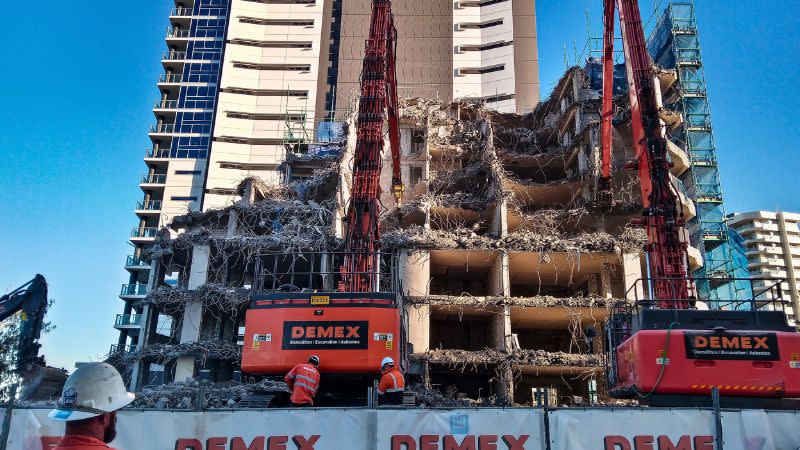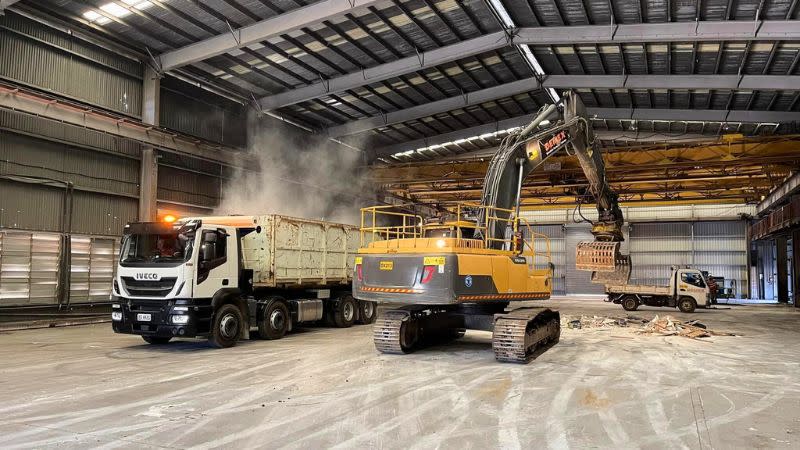ECI: A Game-Changer for Developers Seeking Efficiency

Early contractor involvement—or ECI—is rarely used by developers when assessing options at the front end of development planning and construction, leaving opportunities and money on the table.
ECI is not new to the construction industry, however, it is a different approach for development-site-enabling works typically managed by a head contractor or builder on the developer’s behalf.
A collaboration between the developer and enabling-works contractor, ECI is a transparent approach to identifying best options for the demolition method, works sequencing, hazmat risk management, and remediation, ultimately delivering commercial value to the developer through reduced costs, schedule and risks.
Under ECI, a developer directly engages the enabling works contractor whose job it is to handle hazmat assessment, service disconnections, demolition, and site remediation, essentially performing any works required to prepare a site for construction.
Depending on contractor competency, associated civil works, such as a basement dig, may also form part of an ECI package.
This approach offers benefits to developers seen in coordinated service delivery, greater flexibility in resourcing and access to specialist skills needed to address site specific challenges.

Improved sustainability outcomes are also achieved through onsite demolition materials processing, recycling and reuse.
Capabilities of Tier-1 and Tier-2 early-works contractors are not well understood in construction, although they are integral to project success in other industries such as heavy industry, mining, oil and gas and energy.
Developers are often not aware of how demolition methods, machinery and technology have matured nor do they understand an enabling or early-works contractor can deliver value reflected in the bottom line through:
Multiple options for demolition method
A safer method
An accurate scope of work and schedule
Optimised works sequencing that prevents unnecessary program delays by combining the asbestos removal, demolition and earthworks under one enabling works contractor
Project bottom-line benefits realised through value engineering
Greater confidence in securing project finance.

One common misconception is ECI between the developer and enabling works contractor is undertaken outside of builder engagement.
While ECI can be used by developers to take greater agency over project delivery, it is an approach based on collaboration and trusted working relationships, including with the head contractor or builder.
Engaging and collaborating with key stakeholders at the right time sets up a project for success and breaks down the silos that typically quarantine works and contractors, and often leads to contractual issues.
By contrast, developer, ECI contractor and builder engagement enables a trusted working relationship that is collaborative rather than adversarial.
If there is a lesson in the current construction industry challenges, it is that nothing stays the same.
Survival demands the industry continues innovating and finds new ways to deliver much-needed projects.
Collaboration between the various project stakeholders is frequently cited as a meaningful solution. The challenge for the industry is to deliver on it.
The Urban Developer is proud to partner with DEMEX to deliver this article to you. In doing so, we can continue to publish our daily news, information, insights and opinion to you, our valued readers.
About DEMEX
DEMEX works with Tier.1 and Tier.2 construction companies and developers delivering residential, commercial, and industrial developments. In addition to core services in demolition and decommissioning, asbestos/hazardous materials removal and demolition associated civil works, DEMEX provides onsite material recycling to achieve positive sustainability outcomes for clients.
Learn more at www.demex.com.au














